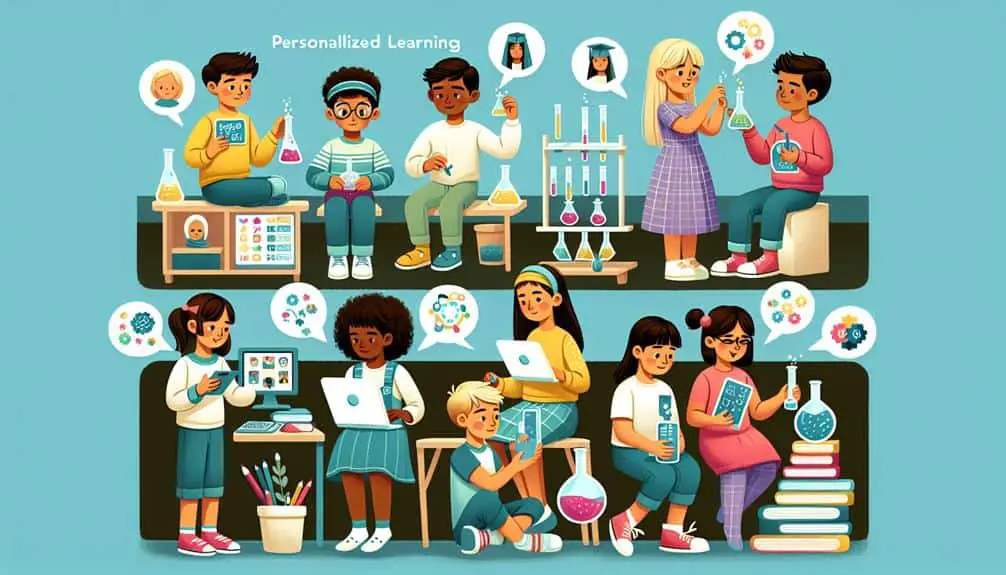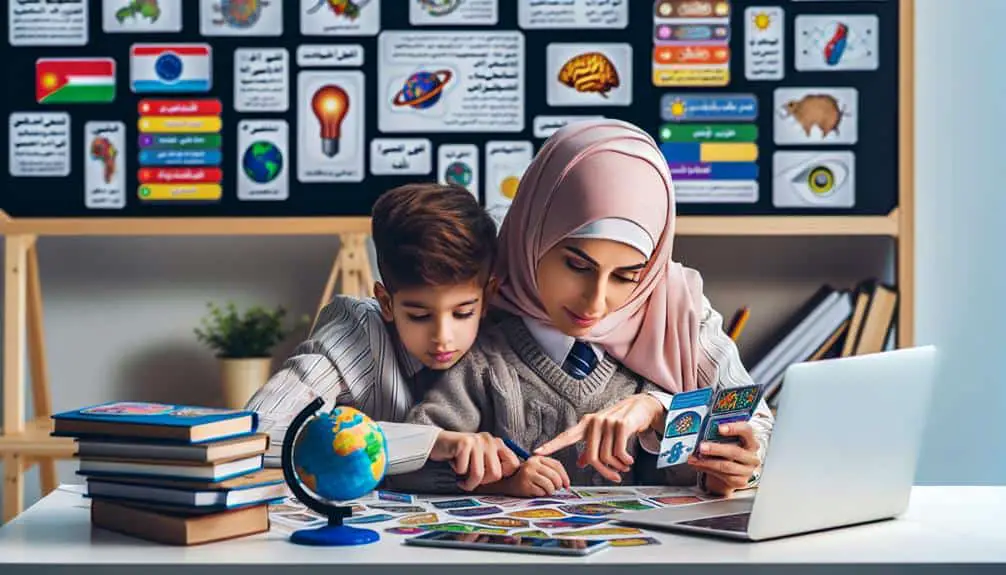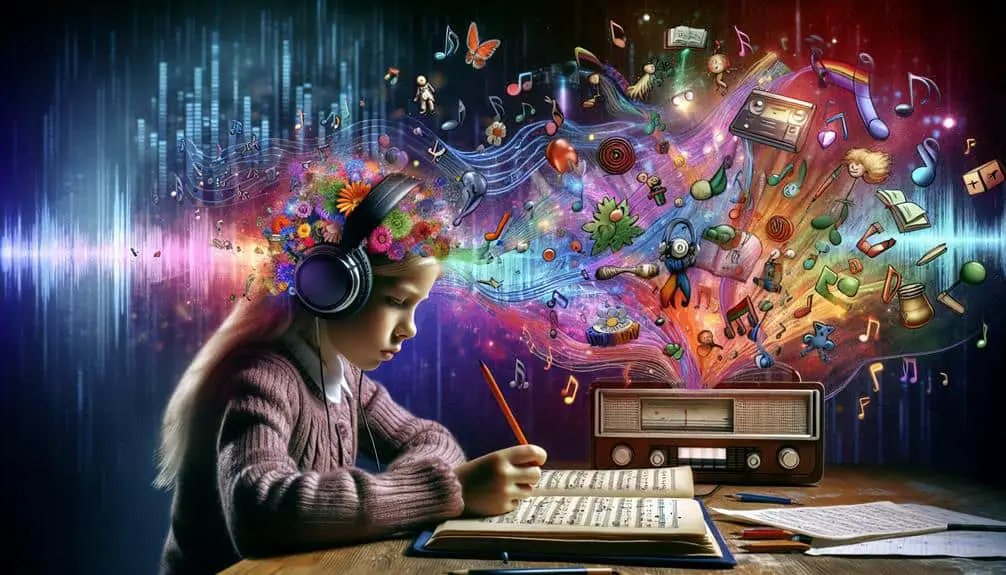Utilize visual techniques with color-coded diagrams and mnemonics. Incorporate auditory strategies like sound association and memory cues. Engage in kinesthetic approaches with movement-based activities and hands-on experiences. Implement reading and writing methods such as note-taking and memory aids. Explore multisensory activities involving touch, sight, smell, or taste. These personalized learning styles can boost memory retention in homeschooling, leading to improved educational outcomes for learners.
Key Points
- Utilize color-coded diagrams and mnemonics for visual learners.
- Employ sound association and memory cues for auditory learners.
- Engage in movement-based activities and hands-on experiences for kinesthetic learners.
- Develop note-taking techniques and memory aids for reading and writing learners.
- Engage in multisensory activities that involve touch, sight, smell, or taste for comprehensive learning.
Visual Learning Techniques
To enhance memory retention in homeschooling, incorporate visual learning techniques such as color-coded diagrams, mnemonics, mind mapping, and flashcards to aid in information processing. Research suggests that utilizing color-coded diagrams can help in organizing and categorizing information, making it easier for you to recall later on.
Mnemonics, which are memory aids that help you remember information through associations, can be particularly effective in homeschool settings. Mind mapping, a visual representation of concepts and ideas, allows for better understanding of relationships between different topics, enhancing memory retention.
Additionally, using flashcards with visuals and concise information can reinforce learning through repetition and quick recall.
Auditory Learning Strategies
Auditory learning strategies leverage sound-based techniques to enhance memory retention and comprehension in homeschooling environments. By incorporating sound association and memory cues, auditory learners can effectively retain information. Utilizing audio guides and mnemonic devices can be particularly beneficial in this style of learning.
Sound association involves linking specific sounds with certain concepts or information, aiding in memory recall. For example, associating a particular sound with a math formula can help solidify the formula in memory. Memory cues, such as background music or ambient sounds during study sessions, can also trigger memory retrieval when revisiting the material.
Audio guides, including podcasts, audiobooks, or recorded lectures, can cater to auditory learners by providing information in a spoken format. Mnemonic devices, like acronyms or rhymes, can further enhance memory retention by turning complex information into catchy, easy-to-recall phrases.
Incorporating these auditory learning strategies into homeschooling can optimize memory retention and comprehension for auditory learners.
Kinesthetic Learning Approaches
Implementing kinesthetic learning approaches in homeschooling settings can greatly enhance memory retention and comprehension for students with a hands-on learning style. Movement-based activities play an important role in engaging kinesthetic learners and improving their understanding of various subjects. By incorporating hands-on experiences such as experiments, role-playing, or physical demonstrations, students can actively participate in their learning process, leading to better information retention.
Studies have shown that kinesthetic learning approaches not only boost memory retention but also help students develop problem-solving skills and critical thinking abilities. When students physically engage with the material, they're more likely to remember and understand the concepts being taught. This active involvement enhances their overall learning experience and contributes to long-term knowledge retention.
In homeschooling environments, parents can utilize kinesthetic learning methods by incorporating interactive activities that require physical movement. These approaches not only cater to the individual learning preferences of kinesthetic learners but also make the learning process more enjoyable and effective. By embracing movement-based strategies, homeschooling can be transformed into a dynamic and engaging experience for students with hands-on learning styles.
Reading and Writing Methods
Utilizing diverse reading and writing methods enhances cognitive development and language proficiency in homeschooling contexts. When it comes to enhancing memory retention through reading and writing, the following techniques can be particularly beneficial:
- Note Taking Techniques: Encouraging your child to develop effective note-taking strategies can help them organize information and reinforce memory recall.
- Memory Aids: Introducing mnemonic devices or memory aids can assist in retaining complex information by linking it to easier-to-remember cues.
- Reflective Writing: Engaging in reflective writing prompts can enhance critical thinking skills and deepen comprehension of the material.
- Summarizing Skills: Practicing summarization tasks can train your child to extract key points from texts, aiding in memory consolidation.
- Visual Aids: Incorporating visual elements like diagrams, mind maps, or illustrations alongside reading can boost memory retention by appealing to different learning styles.
Multisensory Learning Activities
Incorporating multisensory learning activities into your homeschooling curriculum can greatly enhance memory retention and cognitive engagement for your child. Hands-on experiences play an important role in multisensory learning by engaging multiple senses simultaneously. By involving touch, sight, and sometimes even smell or taste, children can form stronger connections in their brains, leading to better retention of information.
For instance, conducting science experiments where they can touch and observe different textures or conducting math problems using physical objects can greatly improve understanding and memory recall.
Sensory exploration is another key aspect of multisensory learning activities. Encouraging your child to explore various textures, colors, and materials can stimulate their senses, making learning more interactive and memorable.
For example, using sensory bins filled with different materials like sand, rice, or water can help children learn about concepts such as measurement or sorting in a hands-on and engaging way.




